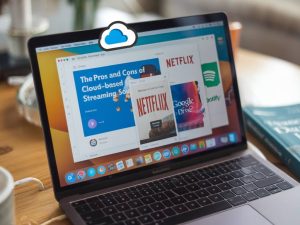Understanding bitrate: how to adjust for perfect streaming quality

Understanding bitrate: how to adjust for perfect streaming quality
When discussing video quality in streaming, the term « bitrate » often surfaces as a critical factor. Understanding bitrate and how to adjust it can significantly affect the quality of your streaming experience. Whether you are a content creator on YouTube, a live stream enthusiast, or someone managing a broadcasting service, knowing the ins and outs of bitrate can help you provide your viewers with the best possible visual experience. In this article, we’ll dive deep into what bitrate is, why it matters, and how you can adjust it to achieve the perfect streaming quality.
What is Bitrate?
Bitrate is a measurement of the amount of data that is transferred per unit of time in a video stream. It is usually measured in kilobits per second (kbps) or megabits per second (Mbps). In essence, it represents the quality of the video and audio being streamed. Higher bitrates generally translate to better quality, but they also require more bandwidth and storage space.
For example, a video with a bitrate of 3000 kbps will likely appear clearer and smoother compared to one with a bitrate of 500 kbps, assuming other factors like resolution and frame rate are equal. However, higher bitrates also demand better internet speeds for both the uploader and the viewer to maintain smooth playback.
Why Bitrate Matters
Bitrate is crucial because it directly affects the quality and performance of the stream. Here are some reasons why bitrate is important:
- Quality: Higher bitrates provide a clearer, sharper image. This is particularly important for detailed scenes, like fast-moving sports events or high-definition video games.
- Buffering: Incorrect bitrate settings can lead to buffering issues. If the bitrate is too high for the viewer’s internet connection, the stream may constantly pause to buffer.
- Data Usage: Bitrate also impacts the amount of data used. Higher bitrates consume more data, which can be important for viewers with data caps.
Factors to Consider When Adjusting Bitrate
There are several factors to consider when adjusting your bitrate:
- Resolution: The resolution of your video (e.g., 720p, 1080p, 4K) will dictate a range of appropriate bitrates.
- Frame Rate: Higher frame rates such as 60fps (frames per second) generally require higher bitrates to maintain quality.
- Internet Speed: Both the upload speed for the broadcaster and the download speed for the viewer must be taken into account.
- Content Type: Fast-paced content requires higher bitrates compared to static or slow-moving content.
Recommended Bitrates for Different Resolutions
To help you get started, here are some general recommendations for bitrates based on video resolution:
- 720p at 30fps: 1500-4000 kbps
- 720p at 60fps: 2250-6000 kbps
- 1080p at 30fps: 3000-6000 kbps
- 1080p at 60fps: 4500-9000 kbps
- 1440p at 30fps: 6000-13000 kbps
- 1440p at 60fps: 9000-18000 kbps
- 4K at 30fps: 13000-34000 kbps
- 4K at 60fps: 20000-51000 kbps
Software and Tools for Adjusting Bitrate
Several software and tools can help you adjust bitrate settings. Here are some popular options:
- OBS Studio: Open Broadcaster Software (OBS) is a free and open-source software used for live streaming and recording. It allows you to adjust bitrate settings for both video and audio.
- Streamlabs OBS: A more user-friendly version of OBS, Streamlabs OBS also provides easy-to-use bitrate adjustment settings.
- XSplit Broadcaster: XSplit offers additional features and user-friendly interfaces for both beginners and advanced users.
- Adobe Premiere Pro: For pre-recorded content, Adobe Premiere Pro allows detailed control over bitrate settings during the export process.
How to Test and Monitor Bitrate
Once you have adjusted your bitrate, it’s essential to test and monitor it to ensure optimal performance. Here’s how:
- Speed Tests: Use tools like Speedtest by Ookla to measure your internet speed and ensure it aligns with your chosen bitrate.
- Bitrate Monitoring Tools: Software like OBS and Streamlabs OBS have built-in tools to monitor bitrate in real-time. You can use these to make adjustments on the fly.
- Viewer Feedback: An often overlooked yet invaluable resource, viewer feedback can provide real-world insights into how your stream performs under different conditions.
Advanced Bitrate Settings: Variable vs. Constant Bitrate
Understanding the difference between Variable Bitrate (VBR) and Constant Bitrate (CBR) can further refine your streaming quality:
- Variable Bitrate (VBR): VBR adjusts the bitrate according to the complexity of the video being processed. During less complex scenes, the bitrate drops, conserving bandwidth. During more complex scenes, the bitrate increases, ensuring higher quality.
- Constant Bitrate (CBR): CBR maintains the same bitrate regardless of the video’s complexity. This setting is often more predictable and easier to manage but can consume more data during less complex scenes.
Bitrate and Codecs
Bitrate isn’t the only factor in determining streaming quality; the codec you use can also have a significant impact. Common codecs include H.264 and H.265 (HEVC).
- H.264: This is one of the most commonly used codecs and offers good quality at reasonable bitrates. It is widely supported across various platforms.
- H.265 (HEVC): This newer codec offers higher quality at lower bitrates compared to H.264 but requires more processing power and may not be supported on all devices.
Troubleshooting Common Bitrate Issues
Sometimes, even with the best settings, you may encounter issues. Here are some common problems and how to troubleshoot them:
- Buffering: Lower your bitrate to see if it resolves the issue. Ensure your internet speed is adequate for your chosen bitrate.
- Pixelation: Increase your bitrate or adjust your resolution settings for better quality.
- Sync Issues: Ensure that your audio and video bitrates are properly balanced and that your software is up-to-date.
Understanding bitrate and how to adjust it is crucial for achieving perfect streaming quality. By taking into account factors like resolution, frame rate, internet speed, and content type, you can make informed decisions that result in a smooth, high-quality viewing experience for your audience. Using the right tools and continuously monitoring your bitrate performance will help you achieve the best results. So dive into your settings, experiment with different bitrates, and find that sweet spot that keeps your viewers coming back for more.





